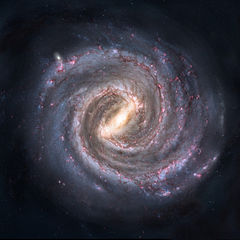MAY 23, 2022 – “Geologists tell us,” I said, “that the earth was formed around 4.5 billion . . .”
“Skip the science stuff,” said the alien. “I’m well-versed in it. How do you think I found my way here?”
“You’ve got a point,” I said, “but where, then, should I begin?”
“I wanna know about you humans. Based on initial inquiries, I’ve concluded that apart from ants and giant redwoods, you humans are by far the most fascinating life forms on this planet. So—tell me about humans.”
“Would you like some lemonade?” I needed to buy time, and if time meant nothing to the alien, surely the thing would grant me plenty of the commodity most precious to earthlings . . . but I caught myself: “Do you even drink lemonade?” I’d realized instantly my classic human foible: since I liked lemonade, I’d assumed that everyone—even an alien—liked it.
“No, I’m good, thanks,” said the visitor. I wondered how many other aliens would be hip enough to say, ‘I’m good,’ not simply, ‘No, thanks.’ Then again, how many other aliens would be ‘good’?
“Okay,” I said. “Just wanted to make sure you’re comfortable, because my answer to your open-ended question is apt to meander and take a long . . .” I hesitated at the concept of time. “. . . while.” (Did the alien fully appreciate the nuances of the language it’d downloaded?)
“I’ll begin with the fact that living on this planet are 7.8 billion humans. Now, one of my maxims provides that an evaluation of any number in any context requires at least one other number as a reference point. For example, to evaluate the latest inflation figure announced by the government, you need to know what the figure was a month or year ago. Likewise, to decide whether to pursue the purchase of a house listed at a stated price, you must know the recent sale price of at least one other house of comparable size, quality, and location. Thus, to evaluate today’s world human population figure, you’d want to know another number—the rate of increase, for example, or for amusement derived from comparison, earth’s total rat population, which is around 7 billion.
“Each human brain is its own synaptical galaxy. In a typical human brain, 125 trillion synapses exist in the cerebral cortex alone—the rough equivalent of the number of stars in 1,500 galaxies the size of the Milky Way. Do the math, as surely you’ve already conducted, and you get a figure trending toward infinity.
“Getting down to earth about it, each of us runs on an independent operating system. Sure, each human interacts with other cerebral galaxies, which is how we build families, societies and civilizations—and how we destroy them—but bouncing around inside each human brain are countless thoughts unique to that brain. Each is an independent galaxy with bright lights, black holes, comets, quasars, wobbly planets, shooting stars, giant dwarfs, super novae, and, all too often, the total vacuum of empty quarters. Multiply that cerebral galaxy by 7.8 billion, and you’ve got a formidable collection of individual light shows. (Cont.)
(Remember to subscribe to this blog and receive notifications of new posts by email.)
© 2022 by Eric Nilsson
